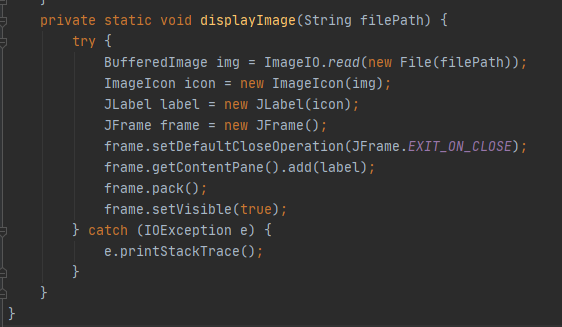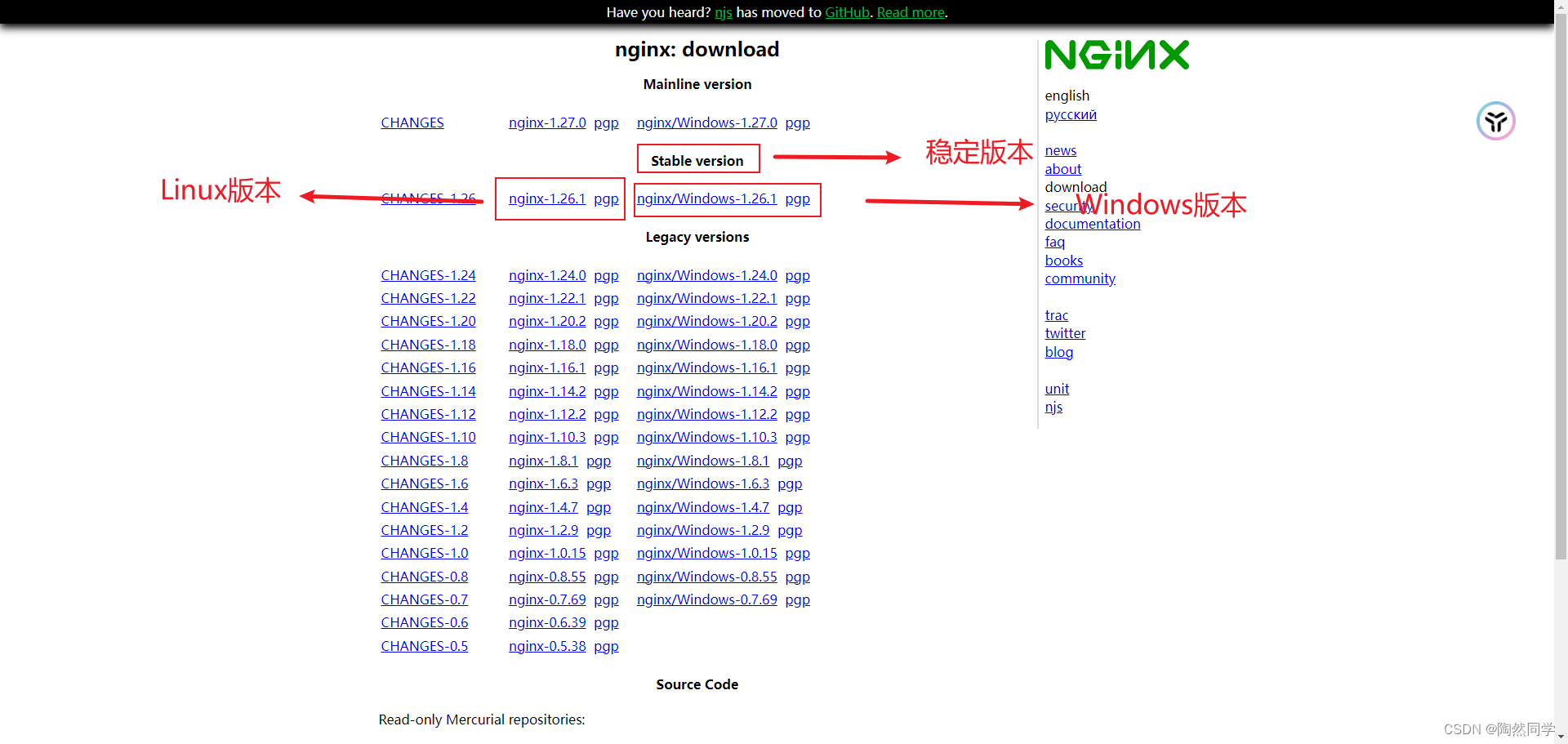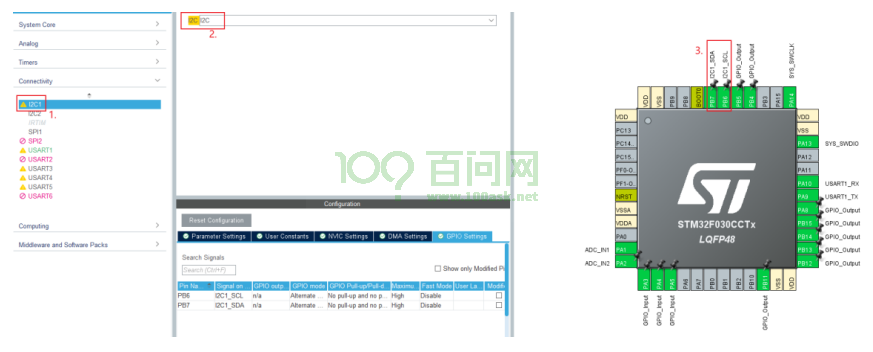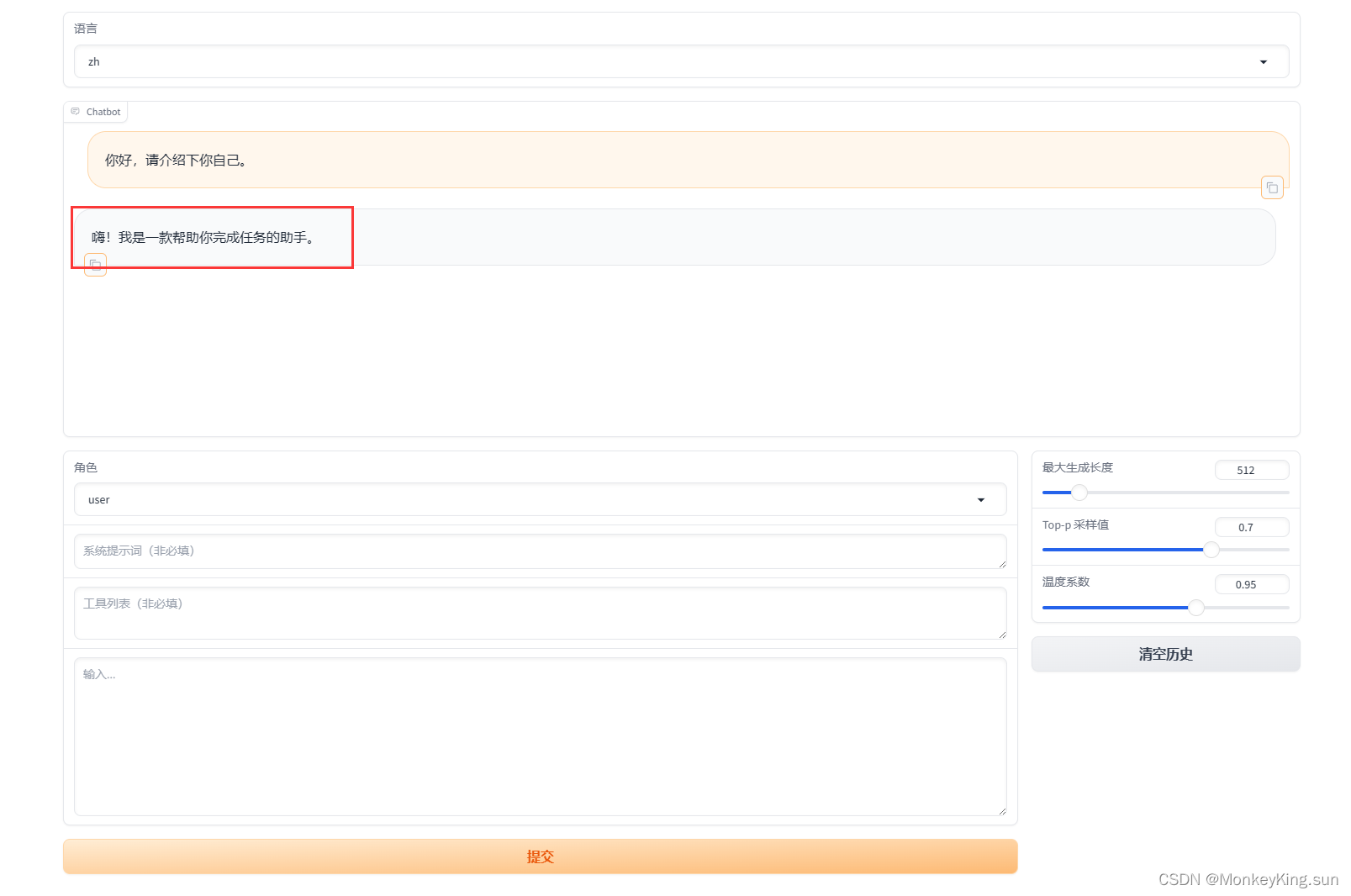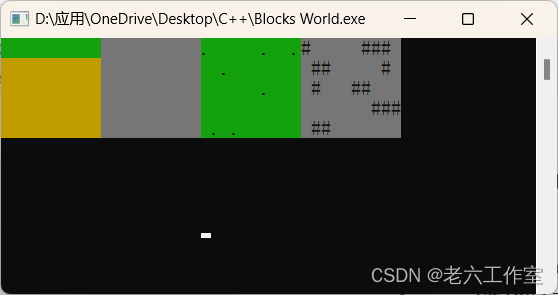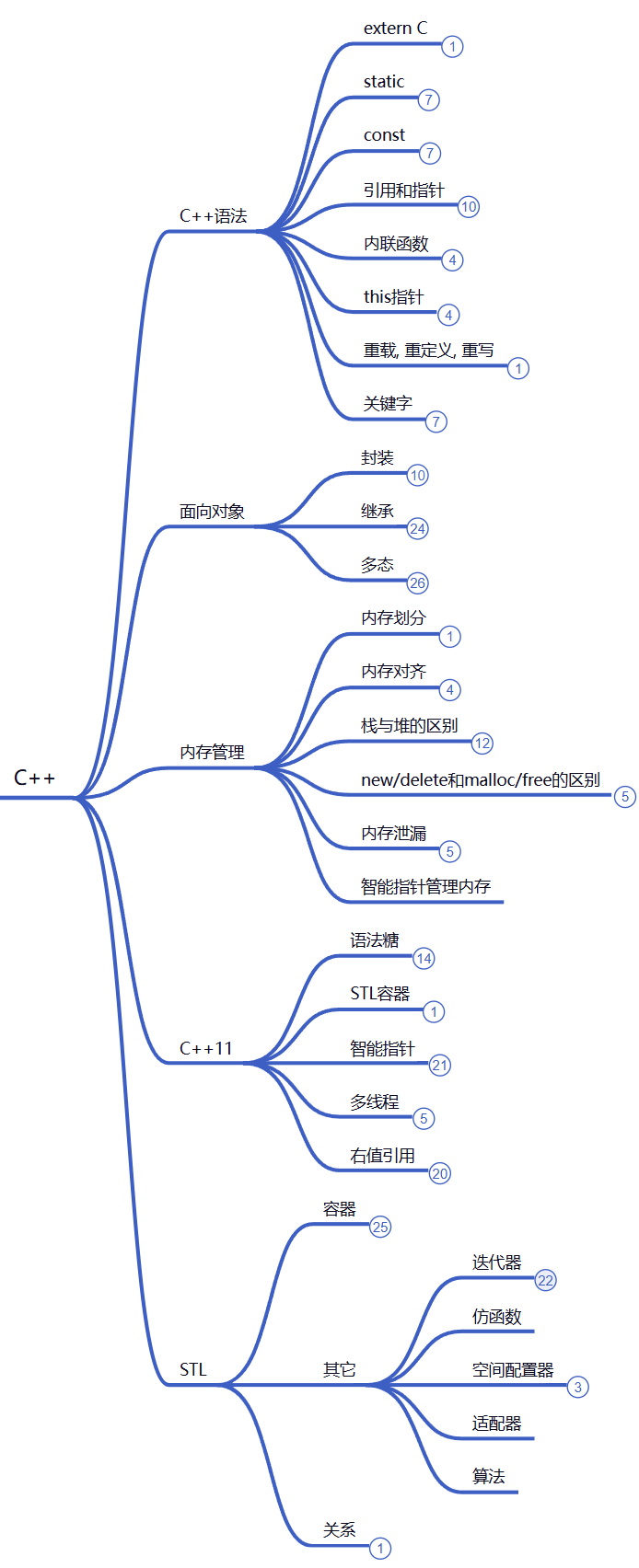类和对象
- 一.拷贝构造函数定义
- 二.拷贝构造函数特征
- 三.const成员函数权限
- 权限的缩小
- 权限的缩放大
- 四.隐式类型转换
一.拷贝构造函数定义
拷贝构造函数:只有单个形参,该形参是对本类类型对象的引用(一般常用const修饰),在用已存
在的类类型对象创建新对象时由编译器自动调用。
二.拷贝构造函数特征
拷贝构造函数也是特殊的成员函数,其特征如下:
- 拷贝构造函数是构造函数的一个重载形式。
- 拷贝构造函数的参数只有一个且必须是类类型对象的引用,使用传值方式编译器直接报错,因为会引发无穷递归调用。
class Date
{
public:
Date(int year = 1900, int month = 1, int day = 1)
{
_year = year;
_month = month;
_day = day;
}
// Date(const Date& d) // 正确写法
Date(const Date& d) // 错误写法:编译报错,会引发无穷递归
{
_year = d._year;
_month = d._month;
_day = d._day;
}
private:
int _year;
int _month;
int _day;
};
int main()
{
Date d1;
Date d2(d1);
return 0;
}
三.const成员函数权限
权限可以平移,也可以缩小,但是不可以放大
下面来看一段代码
权限的缩小
void func(int& x)
{
}
int main()
{
int a = 0;
int& b = a;
b++;
func(a);
// 权限的缩小
const int& c = a;//a可读可写 c子读
return 0;
}
权限的缩放大
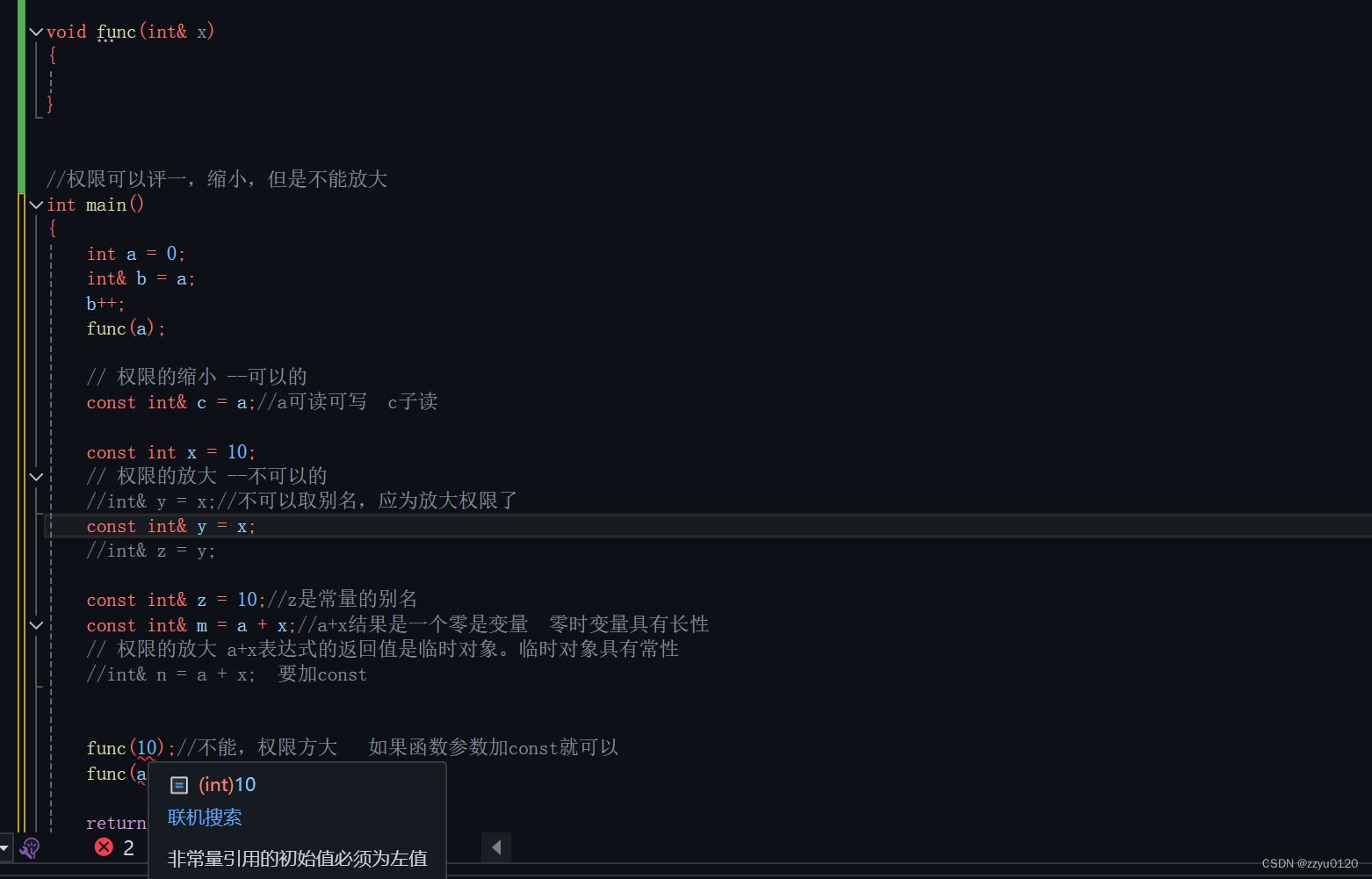
这里报错:非常量应用的初始值必须为左值
但是如果在func函数的参数加上const编译器就不会报错
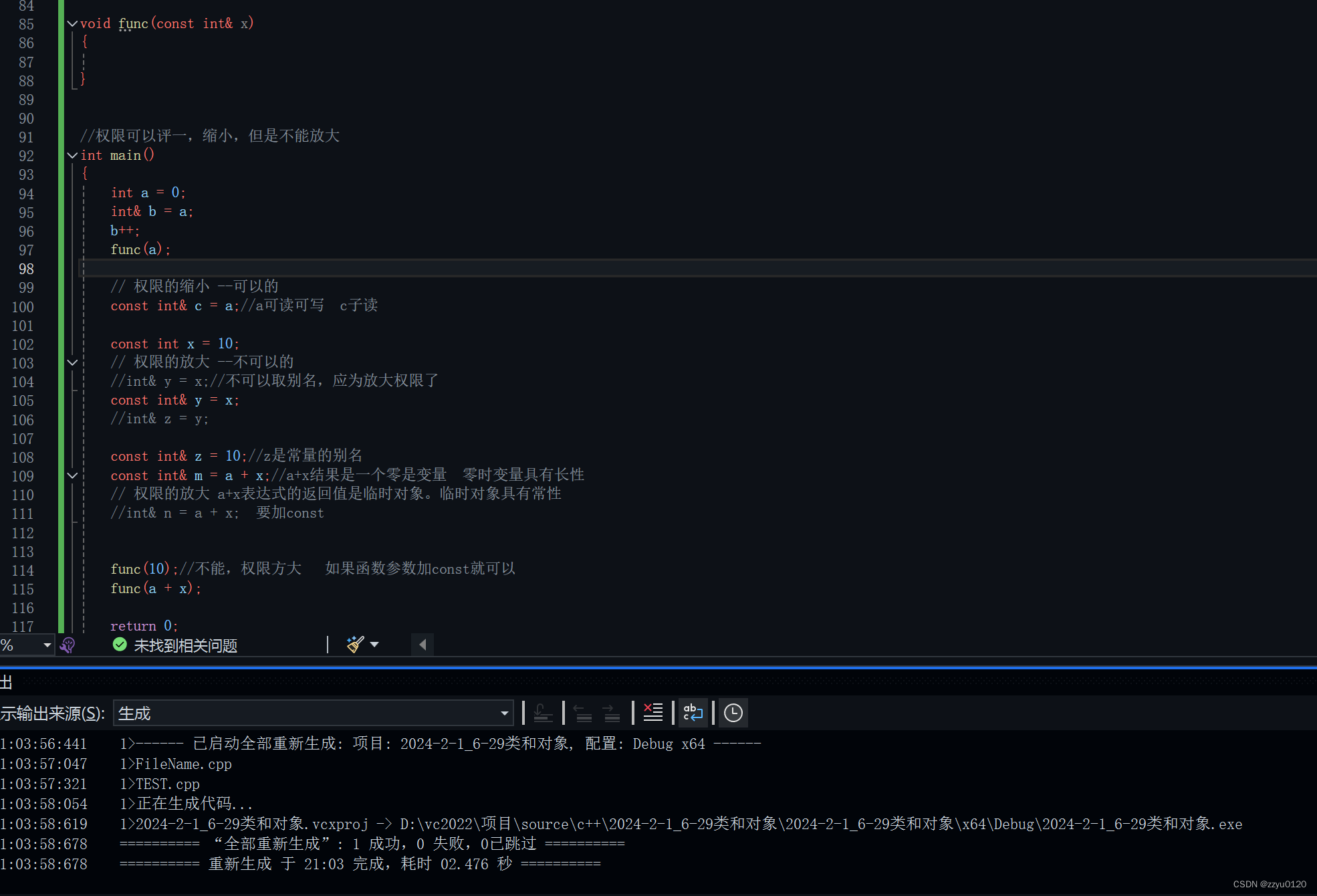
void func(const int& x)
{
}
int main()
{
int a = 0;
int& b = a;
b++;
func(a);
// 权限的缩小
const int& c = a;//a可读可写 c子读
return 0;
}
看下面一段代码
void func(const int& x)
{
}
int main()
{
int a = 0;
int& b = a;
b++;
func(a);
const int x = 10;
const int& y = x;
const int& z = 10;
const int& m = a + x;
return 0;
}
此时代码是编译通过的
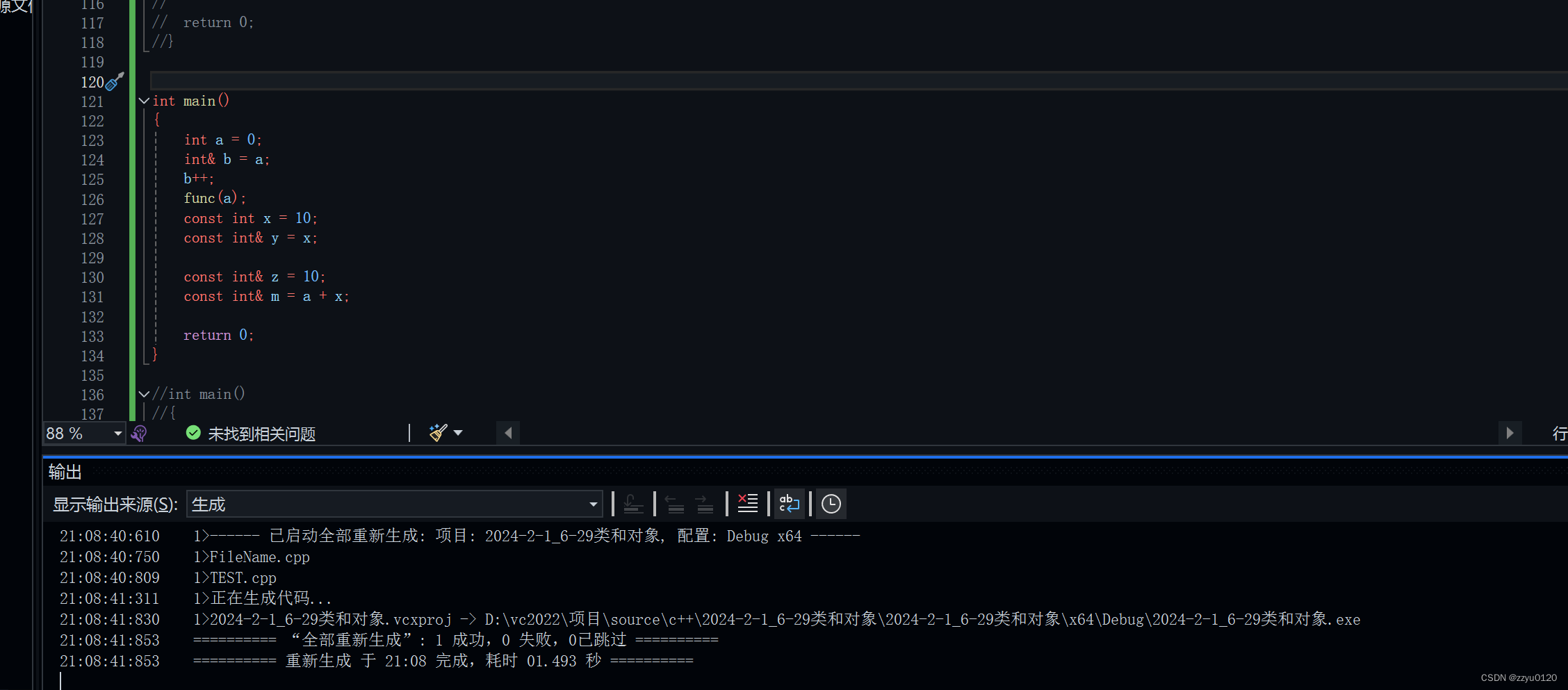
如果不加const就会报错
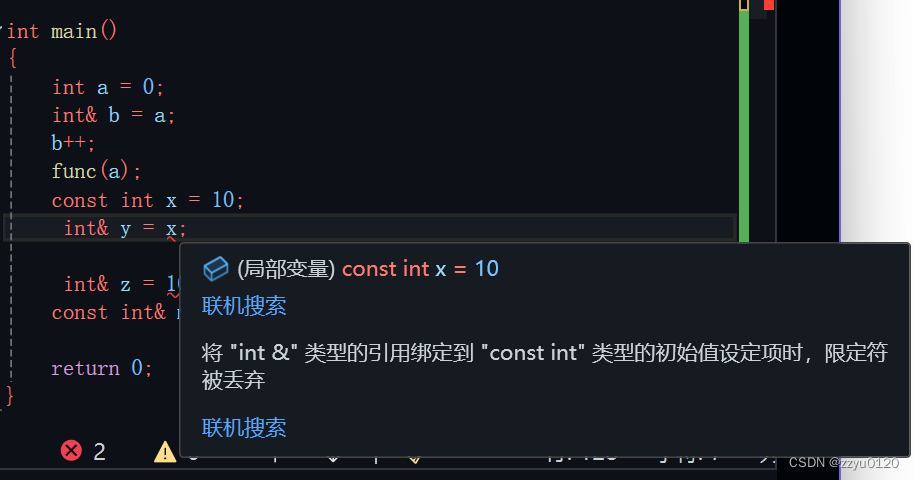
这里说明原因:
z是常量的别名,要加const
a+x结果是一个零是变量 零时变量具有长性 要加const
四.隐式类型转换
int main()
{
double d = 1.1;
int i = d;
int& ri = d;
const int& ri = d;
int i1 = 97;
char ch = 'a';
if (i1 == ch)
{
cout << "相等" << endl;
}
return 0;
}
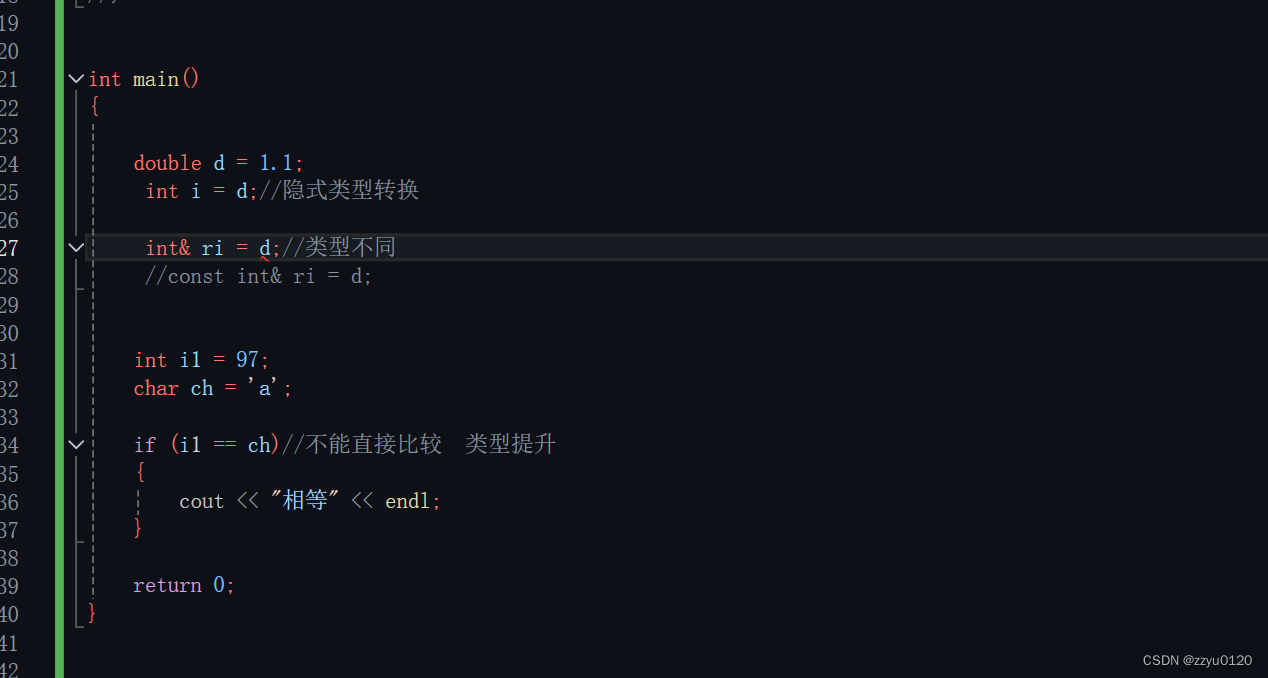
因为
ri和d的类型不同所以会报错
double d = 1.1; int i = d;
double 和 int之间为什么可以直接使用,就是应为隐式类型转换
